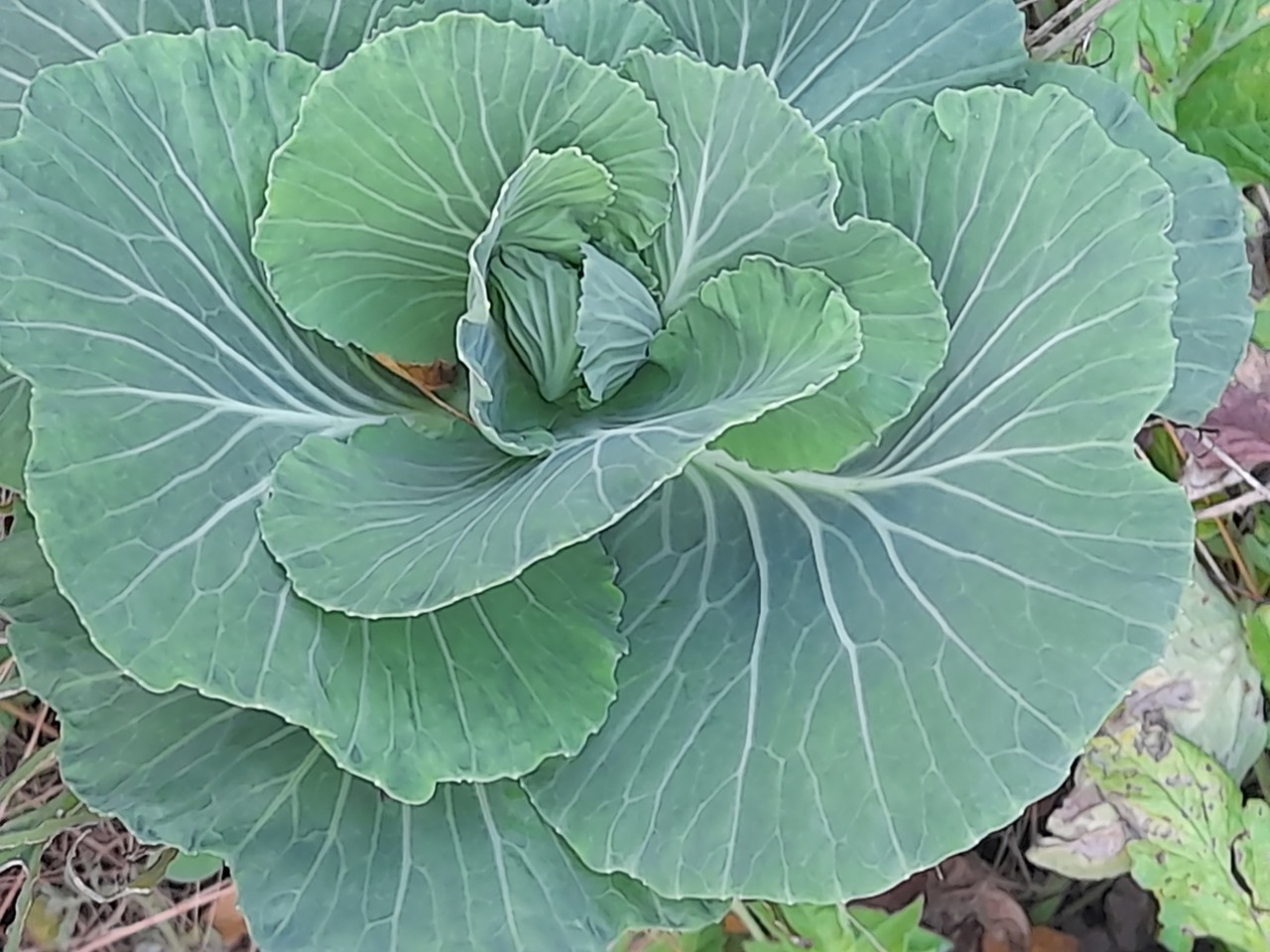
Cabbages, Leeks and Garden Magic
Last spring, I planted way too many cabbages in my front garden. But they thrived despite being left on their own under wire structures that kept the chickens out. I photographed them as they got too big for their enclosures and even wrote about them in one of my blogs. But suddenly everything changed. The white moths returned from their wintry respite and landed on them frequently. To ward off any destruction I hosed the cabbages down and tried to wet the elusive flying monsters that could easily penetrate the wire openings. Apparently. it was a losing battle. Although I gave my all, a month or two later I saw that it just wasn’t good enough and the mature heads of cabbage that now resembled Swiss cheese on long stems, were given away to the awaiting flock of always hungry chickens, to descend upon and gnaw down to the stubs. The leaves were just too battered and holy to salvage. So, the birds had a good feast on the ground where I left them to finish off the cabbages. And they complied rather gratefully. Eventually, I picked up the debris that they’d left and threw it all into the compost pile to further break down and enhance future soil with whatever goodness might still remain. But then something caught my attention out of the corner of my eye. There was a cabbage I’d missed, hidden under a rampant tomato vine. But the leaves on this lone straggler were eaten away in a filagree pattern and they were really quite exquisite. Seeing this, I shrugged my shoulders and left it there without pulling it out of the ground. The penny was beginning to drop. Hallelujah.
Two months passed. The next time I looked at the two-foot-high stump it still had its outer filigreed leaves exposed that were just the merest tracery of organic structure. But something else was happening. A very minute green thing was growing out of the center of the almost invisible leaf and nubby stalk underneath. Another month later and I noticed little leaves beginning to form that were cabbage colored green. A few weeks further on, a new head was beginning to form on top of this stalk and I could hardly make out the leaf underneath that seemed so fragile. I began to realize that I could have left all of the cabbages intact in the ground and they would have all reached this point of new life coming out of old. Weeks have gone by since that day and I’ve taken a few shots of this miracle of life. It’s yet another reminder for me to never give up hope too soon. Nature has her ways of mending whatever appears to be gone. That’s exactly what happened with the leeks I harvested. New ones have grown out of the roots which I left in the soil. And I’ve seen countless green onions grow from the roots plus a little of the white part of the scallion that I put in a shot glass on the kitchen sill with a few drops of water. These green bits come right out of the center of the white part and turn into edible green onions within a month or so, although they’re much smaller than the original plant. But they’re still tasty and nurturing and so much better than store bought that are covered in pesticides. I’ve seen numerous videos by garden wizards on the benefits of replanting the root end of onions and other veg that seem to be finished with their life cycle. So, it shouldn’t be such a big surprise to me that this happened. But it was. Somehow, I forgot that fruiting plants keep forming fruit and vegetables even after the first harvest is over or when all looks lost. Plants don’t know when to stop. They keep going until the weather forces them to quit trying. Just like life itself. If we’re ready to throw the baby out with the bathwater, we’ve got nothing more than a dirty, empty tub. Time to rethink a lot of decisions, for me. Assumptions aren’t always the best policies to follow. Hmm….
Just ask my developing leeks whether or not I should have left their roots in the ground. And they’re only half grown at this point in time. Now they’ve caught up and surpassed the other plants I threw in around them when they looked more like green onions. Except for that fatty in the corner, the broccoli that seems to be several times bigger than its companions, my leeks are little champions.
Such is life in my garden of delights at the House of Cluck-Cluck.
